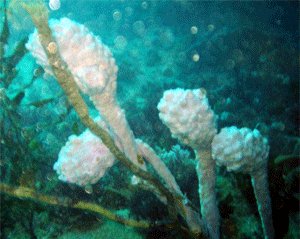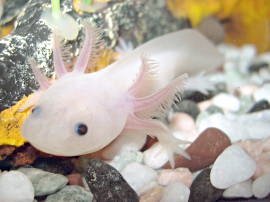 Did we get our backbones from animals like this?Lately I have been reading a book by Jeffrey Schwartz called Sudden Origins. In it Dr. Schwartz talks about the idea that species are not made gradually but instead just suddenly appear (in geological time anyway).
Did we get our backbones from animals like this?Lately I have been reading a book by Jeffrey Schwartz called Sudden Origins. In it Dr. Schwartz talks about the idea that species are not made gradually but instead just suddenly appear (in geological time anyway).
Reading the book was a bit like panning for gold. It was hard work and I needed to sift through a lot of silt but every now and then I got a nugget of gold. One such nugget was about where backbones may have come from.
Hundreds of millions of years ago, there was a time when no animals had backbones. These animals also weren't bilaterally symmetrical. This just means that their bodies weren't set up as two sided (think right and left halves of a human). Instead, they were more like sponges and starfish.
So how do you get from a starfish to a regular old fish? Seems like you'd need to make an awful lot of changes. You would-- unless you were looking at the larval forms of some of these animals.
Some modern creatures that just sit on the bottom of the sea have a larval form that moves around. This is useful in setting up distant colonies.

